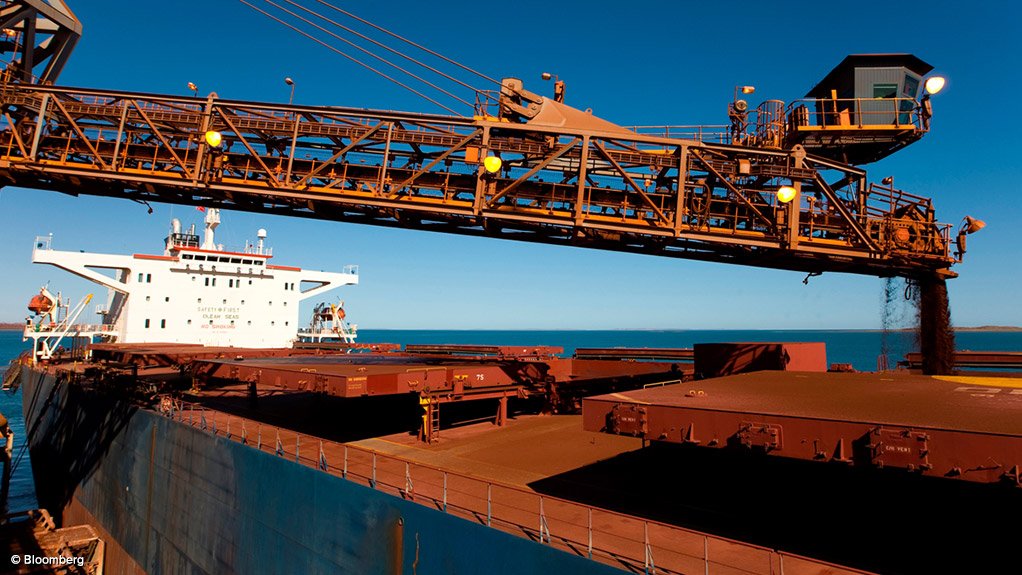Despite slowing growth, China to remain key growth market for metals
TORONTO (miningweekly.com) – As commodity prices touched fresh decade-lows in recent months, a look at the global macroeconomic situation reveals that, despite China being a significant part of the commodity price slump, it will remain a critically important growth market for metals for decades to come.
Addressing an audience at the third annual mineLatinAmerica forum, Scotiabank VP for economics and commodity market specialist Patricia Mohr noted that commodity prices fell to near decade lows from August, under pressure from concerns over a possible "hard landing" in the rate of China’s gross domestic product (GDP) growth, which was linked to a sharp equity correction and the depreciating yuan, and “consternation” caused over the possible US Federal Reserve’s mooted monetary tightening in September, which was delayed.
Mohr noted that the delayed rate increase by the US Fed was becoming destabilising for the commodity market.
China’s GDP growth was expected to come in at about 6.9% this year, falling to 6.4% in 2016 and 6.2% in 2017. China’s GDP was expected to grow by 5% a year between 2025 and 2030.
Mohr stressed that the country’s potential to grow at the phenomenal rates seen in recent decades was declining, with less under-utilised labour and an end to the federal-driven build-out of manufacturing. “More emphasis was also now being placed on developing the service industries rather than "heavy" industry, with greater concern about air quality and environmental protection weighing on prospects,” she said.
Mohr did not expect China to repeat the massive infrastructure spending plans it had implemented in the past, but said the country would provide some stimulus over the next five years – the extent of which would be seen in the next six months as the government announced plans.
She underlined that, despite slowing growth in China’s demand for all metals and commodities, demand was still growing at an admirable rate, and from a bigger base.
However, the macroeconomic situation remained weak, with expected global growth downgraded for the fourth consecutive year, as global growth risks had re-emerged.
India was emerging as the new global growth leader and was expected to grow its GDP at about 7% a year over the coming five years.
ROSY OUTLOOK?
Metal prices rallied in October, but again came under pressure in November. Mohr noted that the US dollar strength deflated commodity prices, with the Scotiabank Commodity Index showing a more-or-less perfect inverted relationship to the US trade-weighted dollar index. She noted that commodity prices held up better in local currencies, except for US producers, who were at a significant competitive disadvantage.
The Scotiabank Commodity Index rose to a near-term peak in 2011, just before financial market concern over excessive Eurozone debt and the negative impact on global economic growth reared its head.
The correction since 2011 was linked to, until recently, an austerity-led recession in southern Europe.
The crash in commodity prices last year – especially for oil – was brought about by members of the Organisation of the Petroleum Exporting Countries refusing to lower output, owing to fears that that would favour the higher-cost US shale market.
The iron-ore price had declined 69% from its peak in February 2013, as the majors – BHP Billiton, Rio Tinto and Vale – expanded their operations. “They were happy to see the price slip as they operated on the lowest-cost tier, in order to deter new developments elsewhere and to force production shutdowns at the most expensive producers,” Mohr stated.
On the positive side, she expected metal prices to recover from 2017 to 2020, once the current wave of copper mine expansions had passed. Markets were also expected to recognise tightening zinc supplies owing to mine depletion, while iron-ore was expected to see limited upside as major iron miners completed their expansions that had forced out higher-cost producers.
Mohr expected zinc supplies to start tightening from 2016 onwards, as production cuts by Glencore and Australian producers started to manifest.
Regarding oil and gas, Mohr said she expected prices to stay lower for longer. Owing to oil comprising up to 40% of Canadian exports, the price was critically important to Canada’s welfare. Mineral exports made up 30%. She stressed that Canada desperately needed to build new oil pipelines to the British Columbia coast and the US to take advantage of the emerging economies across the Pacific. “It pays the rent,” she said.
‘SILK ROUTE’ STRATEGY
While the bulk of its massive infrastructure projects had taken place on the east coast, China had adopted a new ‘Silk Route’ strategy to re-engage old ties towards its east. Mohr noted that 39 railroads were currently being built to reach Central Asian countries, which could stimulate some base metals demand.
China was also expected to continue to be a key driver of global automotive sales, having already accounted for 60% in 2013. Vehicle sales, including sports-utility vehicles which the Chinese were extremely fond of, soared to 17.9-million units in 2013 and 19.7-million in 2014, but was expected to slow to 20.2-million in 2015.
In 2014, vehicle penetration – a measure of vehicles per 1 000 people – was only 104 in China, and 30 in India, underscoring huge potential for oil and metal-intensive motor vehicle sales in the two countries. This compared with developed countries, where there were 589 vehicles per 1 000 people in Western Europe and 803 in the US, for instance.
Despite the high US penetration, sales were high as consumers replaced old cars.
Comments
Press Office
Announcements
What's On
Subscribe to improve your user experience...
Option 1 (equivalent of R125 a month):
Receive a weekly copy of Creamer Media's Engineering News & Mining Weekly magazine
(print copy for those in South Africa and e-magazine for those outside of South Africa)
Receive daily email newsletters
Access to full search results
Access archive of magazine back copies
Access to Projects in Progress
Access to ONE Research Report of your choice in PDF format
Option 2 (equivalent of R375 a month):
All benefits from Option 1
PLUS
Access to Creamer Media's Research Channel Africa for ALL Research Reports, in PDF format, on various industrial and mining sectors
including Electricity; Water; Energy Transition; Hydrogen; Roads, Rail and Ports; Coal; Gold; Platinum; Battery Metals; etc.
Already a subscriber?
Forgotten your password?
Receive weekly copy of Creamer Media's Engineering News & Mining Weekly magazine (print copy for those in South Africa and e-magazine for those outside of South Africa)
➕
Recieve daily email newsletters
➕
Access to full search results
➕
Access archive of magazine back copies
➕
Access to Projects in Progress
➕
Access to ONE Research Report of your choice in PDF format
RESEARCH CHANNEL AFRICA
R4500 (equivalent of R375 a month)
SUBSCRIBEAll benefits from Option 1
➕
Access to Creamer Media's Research Channel Africa for ALL Research Reports on various industrial and mining sectors, in PDF format, including on:
Electricity
➕
Water
➕
Energy Transition
➕
Hydrogen
➕
Roads, Rail and Ports
➕
Coal
➕
Gold
➕
Platinum
➕
Battery Metals
➕
etc.
Receive all benefits from Option 1 or Option 2 delivered to numerous people at your company
➕
Multiple User names and Passwords for simultaneous log-ins
➕
Intranet integration access to all in your organisation





















